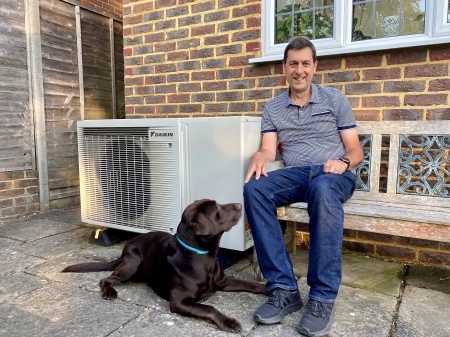
What is the typical energy bill in the UK? Explaining typical consumption figures
No two energy bills will be the same. This is because there are so many factors that can change the amount households could pay.
Your energy provider charges for each unit of energy you use. In other words, for each kilowatt-hour (kWh) used.
How much energy you use, your region, your energy supplier and tariff, your payment method, and your meter type all impact your final bill.
That's a lot of variables. This makes the 'average' household energy bill quite hard to calculate.
Every two years Ofgem, the UK energy regulator, publishes Typical Domestic Consumption Values. Basically, what an average household is expected to use in terms of kilowatt-hours for gas and electricity, over the course of a year. Ofgem provides the averages for three groups of consumers based on their energy usage; low, medium and high.
Here are the most recent typical consumption figures for those average households. The approximate costs are using the average unit rates and standing charges as of 1st October 2023, provided by Energy Savings Trust:
|
Usage Profile |
Average annual gas use | Average annual gas cost* | Average annual electricity use | Average annual electricity cost* |
|---|---|---|---|---|
| Low | 7,500kWh | £626 | 1,800kWh | £687 |
| Medium | 11,500kWh | £902 | 2,700kWh | £933 |
| High | 17,000kWh | £1,281 | 4,100kWh | £1,316 |
*These approximate costs are using the national average unit prices and average daily standing charges for the standard tariff according to Energy Savings Trust. The unit rates and charges vary by region and by payment method, so your exact costs will vary, and this is for illustration purposes only. The figures above may also look different for some customers as we're effectively rolling back standing charges to pre-energy crisis levels for our most vulnerable customers.
The average unit price for dual fuel customers on a standard variable tariff, paying by Direct Debit from 1st October 2023, is approximately 6.9p per kWh plus a 29p daily standing charge for gas. And for electricity, it's roughly 27p per kWh plus a 53p daily standing charge. The figures in the above table may not exactly match due to rounding.
Using the above table, we can work out the approximate total costs for gas plus electricity for these three types of households to get the average energy bills in the UK:
| Usage Profile | Average monthly energy bill from 1st October 22* | Average annual energy bill from 1st October 22* |
|---|---|---|
| Low (typically 1-2 people/bedrooms) | £109 | £1,313 |
| Medium (typically 2-3 people) | £153 | £1,835 |
| High (typically 4-5 people) | £261 | £2,597 |
When the UK government announced that they were capping unit rates they often talked about what this meant for the typical UK household. Therefore, they used the medium usage profile. Energy bills for households using exactly this amount of energy would be roughly £1,900 for the duration of the GEPG scheme. But as the table above shows, some will pay more and some will pay less based on usage, where they live and how they pay. Using typical consumption figures can be a helpful way to communicate decreases or increases in average energy bills.
If you're an EDF customer on the standard variable tariff, you can find out your daily standing charge and unit rates under the government energy price guarantee.
There are several factors that will affect your bill and will likely make them different to the total costs shown above. So let's break these down further.
1. Energy usage
The more energy you use, the higher your bill. The less energy you use, the lower your bill will be.
Your home's energy usage will depend on the size of your home, the number of people living in it, its energy efficiency and how many appliances or devices you use.
The size of your house - The larger your home is, the more energy your central heating system will need to heat your home. If you live in a one-bedroom flat, the amount of energy needed to heat that area is going to be less than if you moved to a four-bed house. For each extra bedroom, your home has, you would roughly expect to use an extra 2,500kWh of gas per year to heat that extra space.
More people in your home will also lead to higher energy usage. There are more meals that need cooking, and more phones that needed charging for example. The average energy bill for a two-bedroom flat, with two people, will be quite different to a two-bedroom flat with four people. Likewise, if your household has an Electric Vehicle, your electricity consumption will be higher than households with petrol or diesel cars.
Energy efficiency - How well your home retains heat also plays a very important role in how much energy you use when heating your home. If your home is poorly insulated, your central heating will need to work harder and use more energy to maintain the temperature of your home. A typical house with no insulation will lose 33% of heat through walls and 25% through the roof(1). You would also expect a detached house to be less energy efficient when compared with a similar-sized terraced house, as there is a greater chance of heat loss through walls.
You can find out more about making your home better insulated with our insulation information page.
The energy rating on your appliances also matters. Energy-hungry appliances from different brands like fridges, ovens, kettles, and lights may use energy quite differently from one another, leading to varied energy usage. Purchasing A-rated appliances can help you reduce your bills as the better the rating, the more efficient the appliance, so the more you'll save in the long term.
Here are three of our favourite energy savings tips to get you started with being more energy efficient:
Find out more about our favourite energy savings tips that you can do right now to cut your energy usage and save on your bills.
2. The type of tariff you're on & meter type
Standard Variable Tariff vs Fixed Tariffs - With fixed tariffs, you pay a set unit price for your gas and electricity over the course of the fixed contract. Therefore, the unit price you pay does not change even if the wholesale energy prices change. Due to the current energy price rises, most energy suppliers are unable to offer any fixed tariff deals at the moment. We can email you when we have better deals in the market again. Sign up for Energy Price Alerts.
A Standard (Variable) tariff means your unit costs can change due to changes in wholesale energy prices as long as they don't exceed Ofgem's price cap.
Meter type: Depending on your meter type, two very similar households may be charged different amounts.
The most common type of meter is a standard electricity meter. With this meter, your electricity will cost the same at any point in the day. Standard meters are quickly being replaced with smart meters for those that are eligible. The great thing about smart meters is that you don't have to take meter readings. Instead, they're sent automatically to your energy provider(3). This ensures your bills are based on your actual use rather than estimates.
However, you may have an economy 7 meter or another time-of-use meter. This is where there are two rates for your electricity; An off-peak rate for electricity, often through the night. An on-peak rate, often during the day. You pay a cheaper rate for electricity for seven hours at night (off-peak) and a higher one during the day. You can read more about this meter type in our 7 facts about economy 7 meters post.
3. The region of the UK you live in
Depending on where you live in the UK, the price of your gas and electricity will vary slightly.
The different prices reflect the different network costs associated with delivering energy to your home in that region.
You read more about how energy is delivered to your home in our National Grid blog post.
4. The method you use to pay your bill
The payment method you use to pay your bill can impact the price of your gas and electric unit rates.
Most customers opt to pay via Direct Debit. Most suppliers offer a Direct Debit discount on unit rates to ensure you get the lowest unit rate of all payment methods. With Direct Debit, customers can spread the higher winter costs throughout the year. Therefore, customers pay a more consistent amount each month. Sometimes your Direct Debit payment may rise or fall. Find out about the potential reasons for a Direct Debit rise.
However, some will prefer to pay the whole amount via Direct Debit whole amount or through a different payment method.
You can read more about the different payment methods available to EDF customers with our Ways to Pay page.
This post helped explain typical consumption figures in the UK and how actual consumption differs for everyone. We can all take steps to reduce our energy usage within our homes:
No heating or hot water?
Find out what to do when your heating packs up. You may be able to sort it out yourself!
Got a combi boiler?
Find out how you can reduce your gas bill by up to £112 (2) by reducing the flow temperature.
What is kWh?
Find out what kWh is and how much it costs. This will help you to better understand your energy use and bills.
Related articles

Get shifty and reduce your carbon footprint

